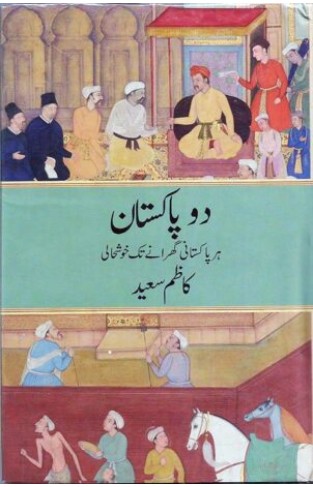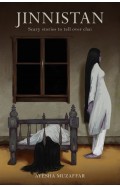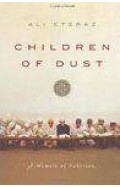Dou Pakistan
By: Kazim Saeed
-
Rs 1,500.00
Due to constant currency fluctuation, prices are subject to change with or without notice.
Almost 80 percent of the people of Pakistan do not have the means to provide a better future for their children. It’s a luxury that can be afforded by only about 15-20 percent of Pakistanis. This unfortunate situation exists because the economic objectives of the 21st century cannot be achieved by holding onto the development paradigms of our Mughal past.
Based on this premise, Kazim Saeed’s Dou Pakistan: Har Pakistani gharane tak khushali (Two Pakistans: providing prosperity to every Pakistani household) clearly identifies the direction the country needs to take and the targets it must set for itself in order to ensure prosperity to every household by 2047.
The theme of this 600-page book may seem ambitious to some, but it is doable. The simple manner in which the topics have been broken down makes it an easy read, even for those with no background in economics. The topics are laterally compartmentalised, with each one flowing into the other so that the thread of one’s thoughts and understanding is not lost. Very few experts have attempted to broach such a comprehensive subject in Urdu, which makes it worth reading all the more.
Upon returning to Pakistan after having spent many years working on economic development abroad, Kazim Saeed found many young Pakistanis asking him basic questions about economic development and poverty eradication. As a practitioner in this field, he knew how many non-western countries had already achieved these goals over the last few decades. The answers were already out there but Kazim Saeed felt that those answers needed to be presented to Pakistanis in the context of their own realities and in a way that was easy for them to comprehend.
Dou Pakistan takes the reader back and forth between the Mughal era and present-day Pakistan, making it easier to understand the basis of our economic woes.
Almost 80 percent of the people of Pakistan do not have the means to provide a better future for their children. It’s a luxury that can be afforded by only about 15-20 percent of Pakistanis. This unfortunate situation exists because the economic objectives of the 21st century cannot be achieved by holding onto the development paradigms of our Mughal past.
Based on this premise, Kazim Saeed’s Dou Pakistan: Har Pakistani gharane tak khushali (Two Pakistans: providing prosperity to every Pakistani household) clearly identifies the direction the country needs to take and the targets it must set for itself in order to ensure prosperity to every household by 2047.
The theme of this 600-page book may seem ambitious to some, but it is doable. The simple manner in which the topics have been broken down makes it an easy read, even for those with no background in economics. The topics are laterally compartmentalised, with each one flowing into the other so that the thread of one’s thoughts and understanding is not lost. Very few experts have attempted to broach such a comprehensive subject in Urdu, which makes it worth reading all the more.
Upon returning to Pakistan after having spent many years working on economic development abroad, Kazim Saeed found many young Pakistanis asking him basic questions about economic development and poverty eradication. As a practitioner in this field, he knew how many non-western countries had already achieved these goals over the last few decades. The answers were already out there but Kazim Saeed felt that those answers needed to be presented to Pakistanis in the context of their own realities and in a way that was easy for them to comprehend.
Dou Pakistan takes the reader back and forth between the Mughal era and present-day Pakistan, making it easier to understand the basis of our economic woes.
Zubin Mehta: A Musical Journey (An Authorized Biography)
By: VOID - Bakhtiar K. Dadabhoy
Rs 840.00 Rs 1,050.00 Ex Tax :Rs 840.00
Total Competition: Lessons in Strategy from Formula One -
By: Ross Brawn
Rs 1,196.00 Rs 1,495.00 Ex Tax :Rs 1,196.00
The Pakistan US Conundrum Jihadists The Military And The People The Struggle For Control
By: Yunas Samad
Rs 1,116.00 Rs 1,395.00 Ex Tax :Rs 1,116.00
Violence And Belonging Land Love And Lethal Conflict In The North West Frontier Province of Pakistan
By: Are Knudsen
Rs 2,155.50 Rs 2,395.00 Ex Tax :Rs 2,155.50
The Pakistan Cauldron Conspiracy Assassination And Instability
By: Farewell
Rs 796.00 Rs 995.00 Ex Tax :Rs 796.00
In the Shadow of Shari'ah: Islam, Islamic Law and Democracy in Pakistan
By: Matthew J Nelson
Rs 2,316.00 Rs 2,895.00 Ex Tax :Rs 2,316.00
Total Competition: Lessons in Strategy from Formula One -
By: Ross Brawn
Rs 1,196.00 Rs 1,495.00 Ex Tax :Rs 1,196.00
No recently viewed books available at the moment.
Zubin Mehta: A Musical Journey (An Authorized Biography)
By: VOID - Bakhtiar K. Dadabhoy
Rs 840.00 Rs 1,050.00 Ex Tax :Rs 840.00
Total Competition: Lessons in Strategy from Formula One -
By: Ross Brawn
Rs 1,196.00 Rs 1,495.00 Ex Tax :Rs 1,196.00














-120x187.jpg?q6)








-120x187.jpg?q6)








